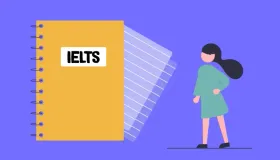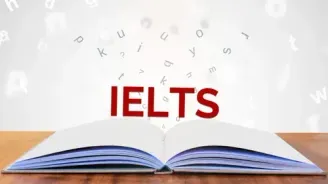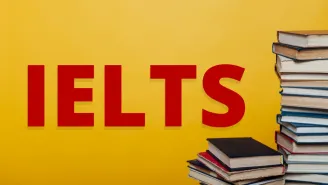The Discovery Of Uranus Reading Answer Passage
The Discovery Of Uranus Reading Answer Passage
Paragraph A. Someone once put forward an attractive though unlikely theory. Throughout the Earth’s annual revolution around the sun, there is one point of space always hidden from our eyes. This point is the opposite part of the Earth’s orbit, which is always hidden by the sun. Could there be another planet there, essentially similar to our own but always invisible?
Paragraph B. If a space probe today sent back evidence that such a world existed it would cause not much more sensation than Sir William Herschel’s discovery of a new planet, Uranus, in 1781. Herschel was an extraordinary man — no other astronomer has ever covered such a vast field of work — and his career deserves study. He was born in Hanover in Germany in 1738, left the German army in 1757, and arrived in England the same year with no money but quite exceptional music ability. He played the violin and oboe and, at one time, was organist in the Octagon Chapel in the city of Bath. Herschel’s was an active mind, and deep inside, he was conscious that music was not his destiny; he, therefore, read widely in science and the arts, but not until 1772 did he come across a book on astronomy. He was then 34, middle-aged by the standards of the time, but without hesitation, he embarked on his new career, financing it by his professional work as a musician. He spent years mastering the art of telescope construction, and even by present-day standards, his instruments are comparable with the best.
Paragraph C. The serious observation began in 1774. He set himself the astonishing task of ‘reviewing the heavens’ in other words, pointing his telescope to every accessible part of the sky and recording what he saw. The first review was made in 1775; the second, and most momentous, in 1780-81. It was during the latter part of this that he discovered Uranus. Afterwards, supported by the royal grant in recognition of his work, he was able to devote himself entirely to astronomy. His final achievements spread from the sun and moon to remote galaxies (of which he discovered hundreds), and papers flooded from his pen until his death in 1822. Among these, there was one sent to the Royal Society in 1781, entitled An Account of a Comet. In his own words:
Paragraph D. On Tuesday the 13th of March, between ten and eleven in the evening, while I was examining the small stars in the neighbourhood of H Geminorum, I perceived one that appeared visibly larger than the rest; being struck with its uncommon magnitude, I compared it to H Geminorum and the small star in the quartile between Auriga and Gemini, and finding it to be much larger than either of them, suspected it to be a comet.
Paragraph E. Herschel’s care was the hallmark of a great observer; he was not prepared to jump to any conclusions. Also, to be fair, the discovery of a new planet was the last thought in anybody’s mind. But further observation by other astronomers besides Herschel revealed two curious facts. For the comet, it showed a remarkably sharp disc; furthermore, it was moving so slowly that it was thought to be a great distance from the sun, and comets are only normally visible in the immediate vicinity of the sun. As its orbit came to be worked out, the truth dawned that it was a new planet far beyond Saturn’s realm and that the ‘reviewer of the heavens’ had stumbled across an unprecedented prize. Herschel wanted to call it Georgian Sidus (Star of George) in honour of his royal patron, King George III of Great Britain. The planet was later for a time called Herschel in honour of its discoverer. The name Uranus, which was first proposed by the German astronomer Johann Elert Bode, was in use by the late 19th century.
Paragraph F. Uranus is a giant in construction, but not so much in size; its diameter compares unfavourably with that of Jupiter and Saturn, though on the terrestrial scale, it is still colossal. Uranus’s atmosphere consists largely of hydrogen and helium, with a trace of methane. Through a telescope, the planet appears as a small bluish-green disc with a faint green periphery. In 1977, while recording the occultation 1 of a star behind the planet, the American astronomer James L. Elliot discovered the presence of five rings encircling the equator of Uranus. Four more rings were discovered in January 1986 during the exploratory flight of Voyager 2 2, In addition to its rings, Uranus has 15 satellites (‘moons’), the last 10 discovered by Voyager 2 on the same flight; all revolve about its equator and move with the planet in an east-west direction. The two largest moons, Titania and Oberon, were discovered by Herschel in 1787. The next two, Umbriel and Ariel, were found in 1851 by the British astronomer William Lassell. Miranda, thought before 1986 to be the innermost moon, was discovered in 1948 by the American astronomer Gerard Peter Kuiper.
Let’s explore the questions and answers of The Discovery Of Uranus reading answer passage.
The Discovery Of Uranus Reading Answers with Sample Questions
Have you read the passage? Now, take the test and find The Discovery Of Uranus Reading answers! Try to answer these questions by yourself before you sneak a peek at the answers given below.
Check Out Top 45+ IELTS Reading Practice Test Questions with Answers
Below are some top 45+ free IELTS Reading Practice test online questions with detailed answers to enhance your IELTS preparation online. We have provided sample passages for each test type for your reference.
- What Is Exploration Reading Answers
- Effects Of Noise Reading Answers
- The Discovery Of Baby Mammoth Reading Answers
- The Dead Sea Scrolls Reading Answers
- The Ring-Tailed Lemur Reading Answers
- Why We Need To Protect Polar Bears Reading Answers
- Nutmeg A Valuable Spice Reading Answers
- What Is Meaning Reading Answers
- Cutty Sark Reading Answers
- The Step Pyramid Of Djoser Reading Answers
- South Pole Adventurer Reading Answers
- The Future Of Work Reading Answers
- Ambergris Reading Answers
- Trees In Trouble Reading Answers
- Could Urban Engineers Learn From Dance Reading Answers
- The Flavour Of Pleasure Reading Answers
- The Value Of A College Degree Reading Answers
- Why You Should Delegate Tasks To Team Members Reading Answers
- Corporate Social Responsibility Reading Answers
- Forest Management In Pennsylvania USA Reading Answers
- Making Time For Science Reading Answers
- The Power Of Play Reading Answers
- Coastal Archaeology Of Britain Reading Answers
- How The Other Half Thinks Reading Answers
- Changes In Reading Habits Reading Answers
- The Forgotten Forest Reading Answers
- When Conversations Flow Reading Answers
- Attitudes Towards Artificial Intelligence Reading Answers
- The Ingenuity Gap Reading Answers
- A Bar At The Folies Reading Answers
- Booking A Wessex Cottages Holiday Reading Answers
- Sunset Tours Reading Answers
- Bird Migration Reading Answers
- Clutter Bugs Beware Reading Answers
- The Hidden Histories Of Exploration Exhibition Reading Answers
- Calisthenics Reading Answers
- Having A Lovely Time Reading Answers
- The Return Of Huarango Reading Answers
- Summer Activities At London Kew Gardens Reading Answers
- Computer Games For Preschoolers Reading Answers
- Extinct The Giant Deer Reading Answers
- Micro Enterprise Credit For Street Youth Reading Answers
- Plain English Campaign Reading Answers
- Glow Worms Reading Answers
- How To Prepare For An Interview Reading Answers
- Quiet Roads Ahead Reading Answers
- Sculpture Reading Answers
- Cornwall Reading Answers
- Latchkey Children Reading Answers
- Healthy Intentions Reading Answers
- Makete Integrated Rural Transport Project Reading Answers
- Allergy Testing Reading Answers
- Life Casting And Art Reading Answers
- Metropolis Movies Reading Answers
- The Bridge That Swayed Reading Answers







